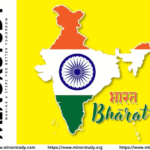🕊️ Introduction: Understanding World Disaster Control Day
Every year, humanity faces countless natural and man-made disasters — from devastating earthquakes and floods to industrial accidents and pandemics. These events remind us that preparedness and prevention are not luxuries, but necessities. That’s where World Disaster Control Day steps in — a global observance dedicated to raising awareness, promoting disaster preparedness, and strengthening community resilience.
- 📜 History of World Disaster Control Day
- 🕰️ Timeline of World Disaster Control Efforts
- 🌐 Facts About World Disaster Control Day
- 🔍 Significance of World Disaster Control Day
- 🎉 Observance and Global Participation
- 💬 How to Wish on World Disaster Control Day
- 🧩 Importance in Our Daily Life
- 🧠 Frequently Asked Questions (FAQs)
- 🌟 Important Points at a Glance
- ❤️ Why It’s Important to Society
- 🌈 Conclusion: A Safer Tomorrow Begins Today
World Disaster Control Day acts as a universal reminder that while disasters are often unavoidable, their impact can be controlled through planning, education, and unity. This observance motivates governments, organizations, and individuals to take active measures to prevent and minimize loss of life and property.
📜 History of World Disaster Control Day
The history of World Disaster Control Day is rooted in the growing global concern over the increasing number and intensity of disasters during the late 20th century. The United Nations, along with several global humanitarian organizations, recognized the urgent need to create awareness programs aimed at building resilience in communities.
It was during this realization that World Disaster Control Day was conceptualized — as a symbolic day of education and action. The idea was to empower every person with the knowledge to respond effectively when disasters strike.
While different regions observe it on different dates, the primary goal remains the same:
👉 To educate people about disaster prevention.
👉 To prepare communities for emergency response.
👉 To create a sustainable and safe world where human life is prioritized.
This global observance also aligns with the United Nations International Strategy for Disaster Reduction (UNISDR) and supports the vision of “Disaster Risk Reduction for Sustainable Development.”
🕰️ Timeline of World Disaster Control Efforts
| Year | Event / Milestone |
|---|---|
| 1945 | The formation of the United Nations marked the beginning of global coordination in addressing humanitarian crises. |
| 1963 | The World Conference on Natural Disasters raised global awareness about preparedness and control measures. |
| 1989 | The UN declared the International Decade for Natural Disaster Reduction (IDNDR) to promote global awareness and preparedness. |
| 1999 | Establishment of the International Strategy for Disaster Reduction (ISDR) to coordinate risk management efforts. |
| 2005 | The Hyogo Framework for Action was adopted, emphasizing the importance of resilience and risk management. |
| 2015 | The Sendai Framework for Disaster Risk Reduction replaced Hyogo, providing a global blueprint to reduce disaster losses by 2030. |
| 2020–2025 | Nations across the globe have been integrating technology and climate science into disaster control systems to enhance early warning and preparedness. |
World Disaster Control Day is not just a date on a calendar — it’s a global reminder of decades of learning, collaboration, and commitment to saving lives.
🌐 Facts About World Disaster Control Day
Here are some fascinating and powerful facts that highlight the importance of disaster control and preparedness:
🌪️ Over 350 natural disasters occur globally every year, affecting millions of lives.
🌊 Floods are the most common natural disaster, accounting for nearly 40% of global disasters.
🏠 More than 90% of disasters are climate-related, according to the United Nations.
💰 Economic losses due to disasters exceed $250 billion annually worldwide.
🧭 Preparedness education can reduce casualties by up to 40% in a single disaster.
🧑🚒 Community-based training has been shown to be the most effective way to reduce disaster impact.
💡 Technology and AI now play a major role in early disaster detection and response planning.
🌍 Developing countries suffer the most, as they often lack the infrastructure and resources to cope with major disasters.
🚨 Disaster control is not just about response, but also about prevention, recovery, and resilience-building.
🤝 World Disaster Control Day unites global citizens in one shared mission — to make the world safer and better prepared.
🔍 Significance of World Disaster Control Day
The significance of World Disaster Control Day lies in its universal message of hope, resilience, and responsibility. It encourages every person — from a student to a policymaker — to take an active role in reducing disaster risks.
Here are some key points highlighting its importance:
1. Promotes Global Preparedness:
It educates individuals, communities, and nations about the importance of disaster readiness and the tools to mitigate harm.2. Strengthens Policy and Infrastructure:
Governments use this day to review and upgrade policies, technologies, and emergency systems.3. Empowers Communities:
Local communities are the first to face the impact of disasters. This day reinforces the need for community-driven preparedness and self-reliance.4. Encourages Research and Innovation:
It fosters global collaboration on early warning systems, AI modeling, and sustainable urban planning.5. Builds Emotional and Social Resilience:
Disaster control is not just physical — it’s psychological. The day promotes mental health support and social recovery frameworks after calamities.6. Integrates Environmental Awareness:
Many disasters are climate-related. Observing this day helps spread awareness about environmental protection and sustainable living.
In short, World Disaster Control Day reminds us that safety begins with awareness, and prevention is always more powerful than reaction.
🎉 Observance and Global Participation
World Disaster Control Day is observed in different forms across countries:
Educational Workshops & Simulations:
Schools, colleges, and NGOs conduct mock drills, awareness talks, and emergency response training.Government and UN Initiatives:
Many countries organize disaster management fairs, rescue operation demonstrations, and policy reviews.Social Media Campaigns:
Global hashtags like #WorldDisasterControlDay, #BePrepared, and #ResilientWorld trend worldwide to raise awareness.Community Involvement:
Volunteers, firefighters, medical workers, and citizens collaborate in clean-up drives, resource distributions, and rescue training.Memorials and Tributes:
Tributes are paid to those who lost their lives in past disasters and to frontline heroes who saved countless others.
It’s not just a day of awareness — it’s a day of gratitude, reflection, and renewal of humanity’s commitment to safeguard our planet.
💬 How to Wish on World Disaster Control Day
When observing or posting about World Disaster Control Day, you can share positive and inspiring messages like these:
🌏 “Let’s unite to build a disaster-resilient world. Prevention saves lives!”
🚨 “Preparedness is power — let’s stay aware, alert, and ready!”
🕊️ “Disasters don’t wait, but we can prepare. Stay strong and stay safe!”
🌿 “A safer planet begins with small steps of awareness. Happy World Disaster Control Day!”
💪 “Let’s honor those who protect and rebuild lives after disasters — today and every day.”
You can also share motivational hashtags such as:
#WorldDisasterControlDay #BePrepared #SafetyFirst #DisasterAwareness #ResilientFuture
🧩 Importance in Our Daily Life
Disaster control is not a distant topic for experts — it’s deeply connected to our daily lives. Every individual, home, school, and organization has a role to play.
Here’s how disaster control principles apply in our everyday routines:
Home Safety:
Keeping first aid kits, fire extinguishers, and emergency contact lists ready can make a huge difference.Education:
Teaching children about emergency response and evacuation plans builds lifelong awareness.Community Readiness:
Participating in local disaster drills or awareness programs creates stronger, united neighborhoods.Environmental Care:
Simple actions like planting trees, reducing pollution, and avoiding deforestation contribute to long-term disaster prevention.Technology Use:
Mobile alerts, weather apps, and GPS tracking now help us stay informed in real-time during emergencies.Mental Resilience:
Staying calm, positive, and prepared emotionally can help families handle crises better.
Thus, World Disaster Control Day teaches us that safety starts at home, and awareness is the best defense against uncertainty.
🧠 Frequently Asked Questions (FAQs)
Q1. What is the main purpose of World Disaster Control Day?
👉 Its main purpose is to promote awareness, preparedness, and prevention of disasters worldwide, encouraging global cooperation in reducing risk and saving lives.
Q2. Who organizes World Disaster Control Day?
👉 It is supported globally by the United Nations, local governments, NGOs, and disaster management authorities.
Q3. Why is disaster control so important today?
👉 Because the frequency and intensity of disasters — both natural and human-made — are increasing due to climate change and urbanization.
Q4. How can individuals contribute to disaster control?
👉 By staying informed, participating in awareness programs, creating family emergency plans, and supporting sustainable practices.
Q5. What are the key types of disasters addressed on this day?
👉 Earthquakes, floods, cyclones, wildfires, landslides, pandemics, and industrial accidents.
Q6. How does technology help in disaster control?
👉 Through AI prediction models, satellite imaging, early warning systems, and mobile alert networks that detect and manage emergencies efficiently.
Q7. How does education help in disaster management?
👉 Education builds awareness, preparedness, and resilience, especially when disaster management is included in school curriculums.
🌟 Important Points at a Glance
🌍 World Disaster Control Day promotes preparedness, prevention, and resilience.
📅 It is globally recognized to encourage safety and disaster risk reduction.
🧭 It highlights the role of education and technology in saving lives.
🧑🤝🧑 It emphasizes community participation and awareness.
🌱 It supports sustainability and environmental protection.
💪 It inspires every person to act — because prevention is always better than cure.
❤️ Why It’s Important to Society
Disasters can strike anyone, anywhere, at any time — but their impact depends on how well society is prepared.
World Disaster Control Day helps society:
Build trust and cooperation between citizens and authorities.
Reduce economic losses and human suffering.
Encourage sustainable city planning and resource management.
Create a culture of safety and empathy, where helping others becomes a shared value.
Inspire innovation and policy change for better risk management systems.
In essence, this observance nurtures a culture of collective responsibility, ensuring that the next generation inherits a safer and more resilient world.
🌈 Conclusion: A Safer Tomorrow Begins Today
World Disaster Control Day reminds us that disasters are inevitable, but their destruction is not.
Through awareness, education, and unity, we can transform fear into strength and chaos into control.
Every family that learns how to prepare, every school that teaches safety drills, and every government that invests in prevention contributes to a stronger and safer planet.
Let this day inspire us to act — not just for ourselves, but for future generations. Because the greatest victory against disaster is not survival — it’s prevention, preparedness, and compassion.









**mind vault**
mind vault is a premium cognitive support formula created for adults 45+. It’s thoughtfully designed to help maintain clear thinking
Greetings from Idaho! I’m bored to tears at work so I decided to browse your blog on my iphone during lunch break. I enjoy the information you provide here and can’t wait to take a look when I get home. I’m amazed at how quick your blog loaded on my mobile .. I’m not even using WIFI, just 3G .. Anyhow, superb site!